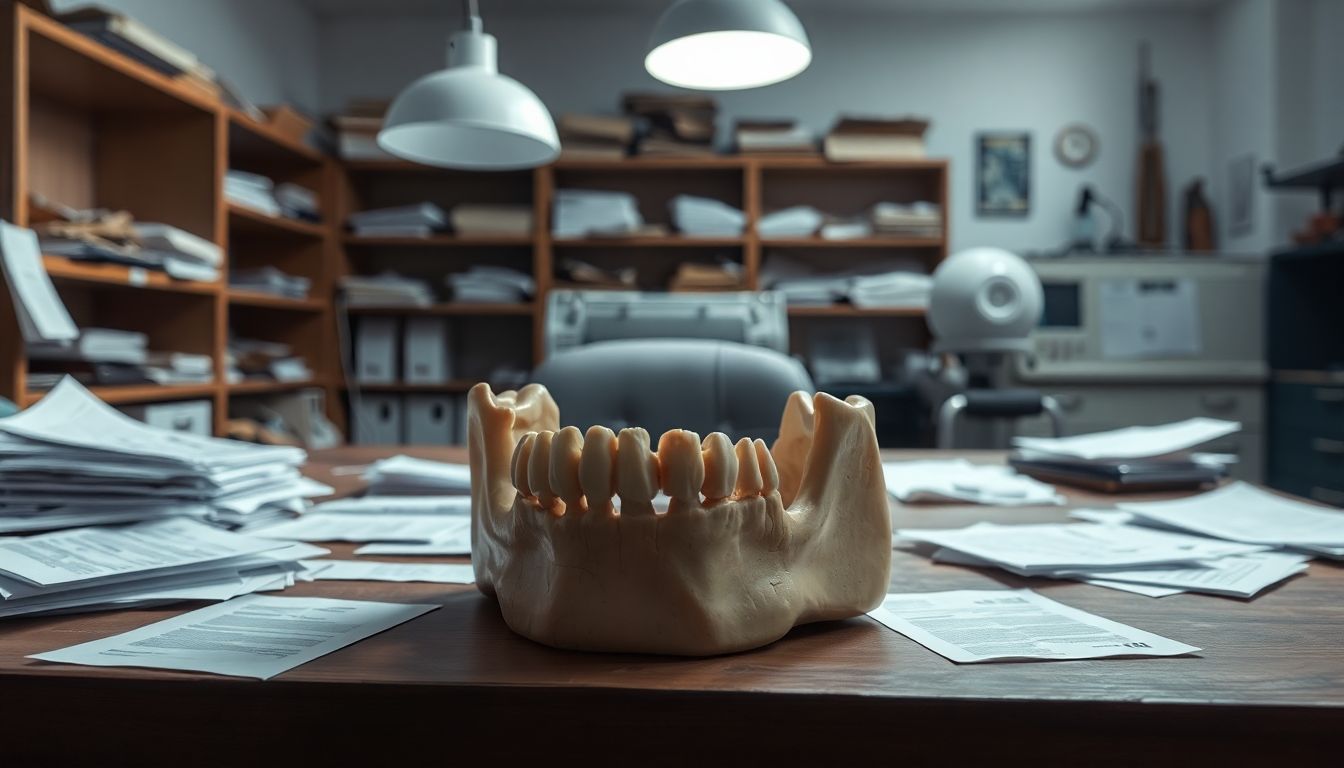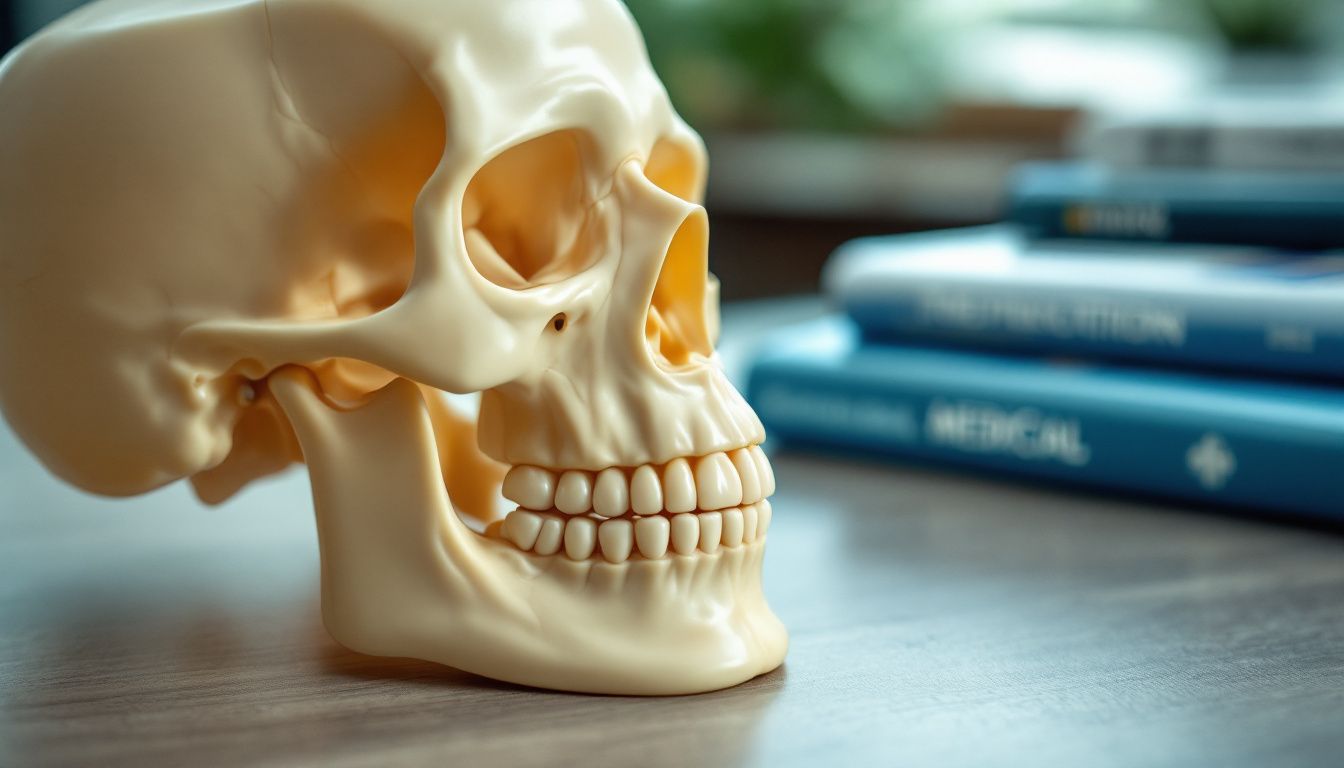Dealing with jaw pain or stiffness can be frustrating and even scary. Temporomandibular Joint Dysfunction (TMJ) affects the joint that connects your lower jaw to your skull, causing issues like jaw locking or popping.
Thank you for reading this post, don't forget to subscribe!This blog will explain TMJ disorders, their causes, symptoms, diagnosis methods, and treatments you can consider. Keep reading to learn ways to ease your discomfort and improve jaw movement!
Key Takeaways
- TMJ dysfunction affects the jaw joint, causing pain, stiffness, and issues like jaw locking or popping. It impacts about 10 million Americans, mostly women aged 20-40.
- Common causes include jaw injuries, teeth grinding (bruxism), stress, arthritis, and poor posture. Early diagnosis can prevent worsening symptoms.
- Non-invasive treatments like physical therapy, stress management techniques (e.g., relaxation exercises), medications, and mouthguards help ease TMJ problems.
- Advanced cases may require imaging tests (X-rays or MRIs) or surgical options such as arthroscopy or joint replacement to fix severe damage.
- Ongoing research explores better treatments like Botox injections for muscle tension relief and cognitive behavioral therapy for stress-related teeth grinding.
Understanding Temporomandibular Joint Dysfunction (TMJ)
The temporomandibular joint connects your jaw to the skull. TMJ dysfunction happens when this joint or the areas around it face problems, leading to pain and difficulty moving your jaw.
Definition and common symptoms
Temporomandibular joint dysfunction (TMJ) affects the joint connecting your lower jaw to your skull. It can cause pain or tenderness in the jaw, especially near the ears. People may also notice difficulty chewing, clicking or popping sounds during jaw movement, and sometimes even locking of the jaw.
Jaw stiffness and limited movement are other common TMJ symptoms. You might feel discomfort while opening your mouth wide or biting into harder foods. Some experience jaw misalignment, making simple actions like closing their mouths uncomfortable or uneven.
Possible causes of TMJ
Jaw injuries from accidents or sports can harm the temporomandibular joint (TMJ). Even small impacts might cause issues over time. Whiplash or direct trauma are also linked to TMJ dysfunction.
These injuries may lead to joint instability and jaw pain.
Teeth grinding, often called bruxism, puts extra strain on the jaw joints. Stress commonly triggers teeth clenching, adding tension to muscles around the area. Arthritis in the jaw joint—like rheumatoid or psoriatic arthritis—can inflame and damage tissues.
Poor posture while sitting or sleeping may align your lower jaw poorly, straining its movement… Moving forward into how experts diagnose TMJ reveals more clarity about this condition!
Diagnosis of TMJ
A doctor or dentist usually starts with a physical exam to check your jaw’s movement and any pain. They may use scans like X-rays or MRIs to get a clearer look at the joint and nearby areas.
Clinical examination by a dental or healthcare professional
A dental or healthcare professional examines the jaw to diagnose TMJ dysfunction. They check your jaw movement, listen for clicking or popping sounds, and feel for tenderness around the temporomandibular joints.
They may also ask about habits like teeth grinding or clenching. Medical history helps identify causes such as injuries, arthritis, or stress-related issues. Early detection during this exam can prevent worsening symptoms like jaw locking or severe pain.
Imaging tests such as X-rays or MRI
Imaging tests help doctors see the temporomandibular joint clearly. They check for issues like jaw misalignment or joint damage.
- X-rays are quick and commonly used to spot bone problems in the jaw. They reveal fractures, arthritis, or tooth decay linked to TMJ disorders.
- MRI scans provide detailed images of soft tissues, like muscles and ligaments around the joint. This test helps detect inflammation or disc displacement in TMJ.
- Dental professionals may use imaging to diagnose conditions causing teeth grinding or clenching. These habits often worsen TMJ symptoms.
- Doctors sometimes recommend imaging after jaw injuries or trauma to rule out fractures or joint instability.
- Imaging can also catch other causes of jaw pain, like oral infections or rheumatoid arthritis, ensuring proper treatment plans are made.
Early diagnosis through these tests leads to better management and effective tmj treatment options.

Treatment options for TMJ
There are many ways to ease TMJ dysfunction. Treatments can range from simple exercises to more advanced medical help—including devices or procedures.
Non-invasive methods: physical therapy, stress management techniques, and medications
Non-invasive methods can help relieve jaw pain and improve TMJ symptoms. These approaches are often effective without the need for surgery.
- Physical therapy can ease jaw stiffness and improve jaw movement. Therapists may guide patients through targeted jaw exercises to reduce TMJ inflammation and strengthen muscles around the temporomandibular joint.
- Stress management techniques, such as relaxation techniques or cognitive-behavioral therapy, can lessen teeth grinding or clenching caused by anxiety. Lowering stress helps prevent further strain on the joint.
- Medications like pain relievers or anti-inflammatory drugs can reduce TMJ pain and swelling. Doctors might also recommend muscle relaxants for severe cases of jaw stiffness.
Next, let’s explore dental approaches for managing temporomandibular disorders.
Dental approaches: mouthguards or splints
Mouthguards or splints can help manage TMJ dysfunction. These oral appliances reduce teeth grinding, clenching, and jaw pain. A mouthguard is usually soft and worn at night to protect the teeth from damage caused by sleep bruxism.
Splints are firmer devices that can support jaw alignment and ease joint stress.
Both tools work to relax muscles and improve jaw movement. Dentists design them to fit your bite for optimal comfort and use. Bite guards prevent further wear on teeth while reducing tmj inflammation linked with grinding or misalignment issues.
Surgical options for severe cases
If non-invasive treatments or dental devices like mouthguards fail, surgery may be necessary. TMJ surgery aims to fix severe jaw locking, joint instability, or internal derangements.
Procedures range from minimally invasive arthroscopy to open-joint surgery for complex cases.
Arthrocentesis is the least invasive option and uses small needles to flush the joint. For more advanced problems, surgeons may perform arthrotomy or replace parts of the temporomandibular joint with implants.
These options are considered only if pain and jaw misalignment interfere with daily life.
Prevalence and ongoing research
TMJ disorders affect millions of people worldwide, making it a common issue. Researchers are working hard to find better treatments and understand the condition more deeply.
Estimated number of affected individuals
TMJ dysfunction is more common than many realize. Millions of people in the United States deal with its challenges. Below is a quick look at the estimated number of those affected and related observations:
| Aspect | Details |
|---|---|
| Estimated Prevalence | 10 million Americans |
| Gender Distribution | More common in women |
| Age Range | Most cases appear in adults aged 20-40 |
| Global Context | Seen worldwide, but specific numbers vary by region |
| Trend | Cases are increasing due to stress-related factors |
The numbers highlight an urgent need for awareness and better care. Without proper intervention, many continue to suffer silently.
Ongoing research for better understanding and treatment
Millions of people experience TMJ disorders every year. Research is ongoing to uncover its causes and improve treatments. Scientists examine links between jaw injuries, teeth grinding, stress, and even genetic conditions like Ehlers-Danlos Syndrome (EDS).
Understanding these connections may help reduce tmj pain for many.
New treatments are also being explored. Botulinum toxin injections show promise in easing muscle tension. Cognitive behavioral therapy helps manage stress linked to teeth clenching or grinding.
Advanced imaging tests like MRIs continue improving diagnosis accuracy, guiding better care strategies for joint inflammation or misalignment issues.
Importance of early diagnosis and intervention
Early diagnosis of temporomandibular joint dysfunction (TMJ) helps manage symptoms before they worsen. Jaw pain, teeth grinding, and jaw stiffness often lead to more severe problems if not treated in time.
Identifying TMJ dysfunction early can prevent complications like chronic inflammation or permanent joint damage. Stress-related behaviors such as teeth clenching or abnormal jaw movement may be addressed quickly with stress-reduction techniques and physical therapy exercises.
Imaging tests like X-rays make it easier for experts to spot issues early.
Prompt intervention allows for effective tmj treatment strategies such as dental devices or soft food diets, which reduce strain on the joint. Delayed care could mean needing costly surgical intervention later.
Early use of mouthguards prevents further wear caused by teeth grinding at night. Jaw exercises prescribed during initial stages lower risks of locking or improper alignment over time.
Quick attention ensures a better quality of life while reducing long-term health concerns linked to untreated TMJ disorders.
Conclusion
TMJ dysfunction can seriously impact daily life. Jaw pain, stiffness, and locking are frustrating but treatable with the right care. Early diagnosis helps manage symptoms and prevent worsening issues.
If you notice TMJ symptoms, seek help from a healthcare professional. Relief is possible with proper treatment!
